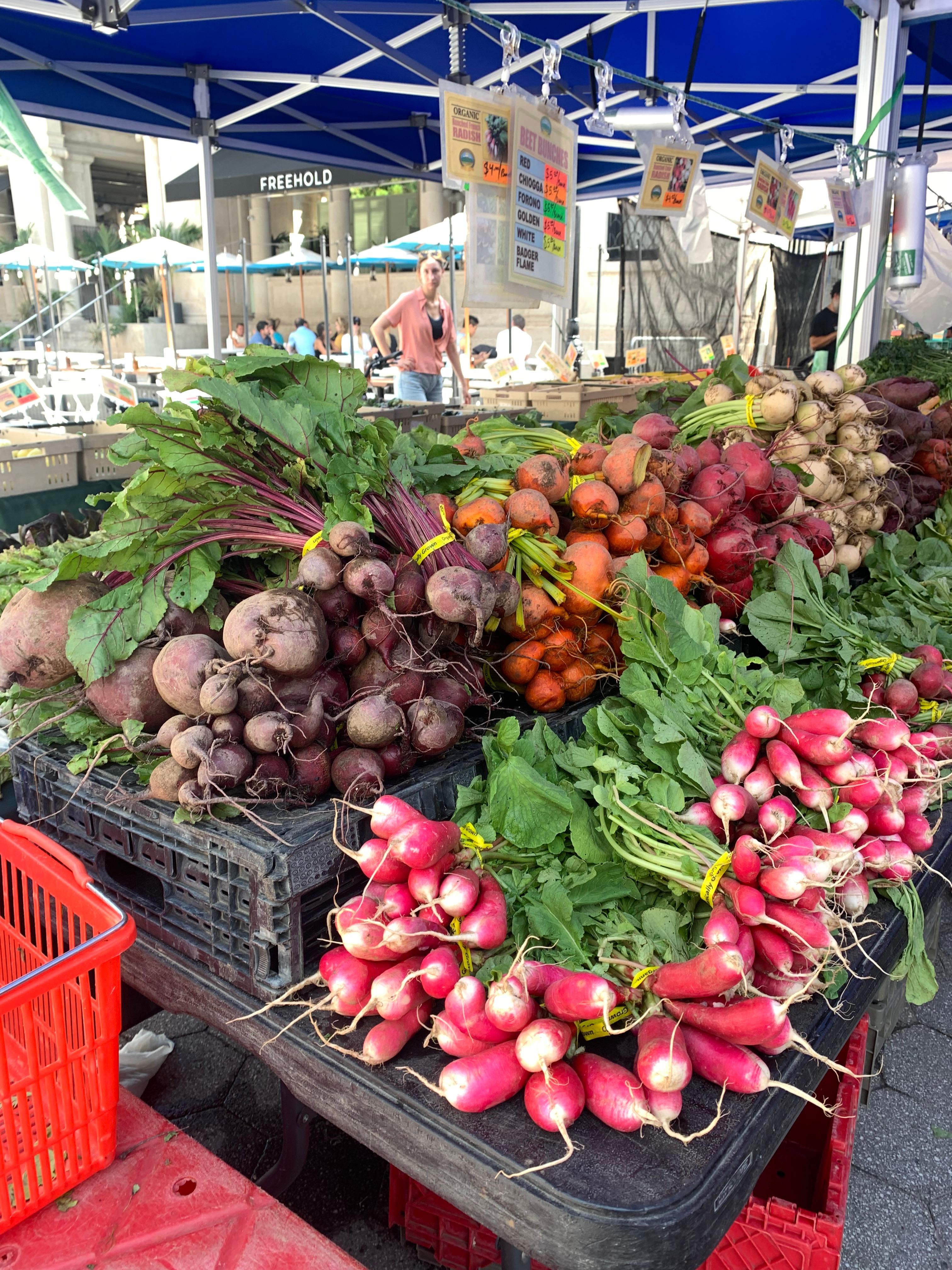Food Insecurity
|
The History & Impact of Urban Agriculture in NYC
There exists in New York City a groundswell of green. It’s not located in Central or Prospect Park, nor is it located in the forests of The Bronx. This green lives in...
Read
There exists in New York City a groundswell of green. It’s not located in Central or Prospect Park, nor is it located in the forests of The Bronx. This green lives in the nearly 100 acres of community gardens and farms planted across the five boroughs of the city. Rooted on rooftops and vacant lots, these greenspaces are vital sources of food, fellowship, and education for the communities they serve. They’re also in constant danger of being destroyed from gentrification, displacement, and development. In this blog post, we’re going to explore the history of urban agriculture in New York and talk about why it's so important to the fight against hunger in our city. We’ll also chat with The Campaign Against Hunger, a Food Bank member agency that currently operates two farms in Brooklyn. ''They were getting ready to take something away from our community, something too important to lose... I told them I was born poor, I live poor, and I’m going to die poor. I don’t beg. But these are for the community. I asked [the city] to help me.” Out of context, these words from a 1982 New York Times interview could be about anything: affordable housing, local grocery stores, schools, churches. But spoken by then 82-year-old activist and environmentalist Hattie Carthan, they were about trees, specifically the 1,500 trees she had spent her twilight years planting as the leader of the “Bedford-Stuyvesant Beautification Committee.” When Carthan first moved onto Vernon Avenue in 1953, it was a beautiful tree-lined street in the heart of Bed-Stuy. But over the course of a decade, all but three of the trees had died, thanks in large part to neglect from the city. To fight back against this deterioration, Carthan organized her neighbors into the T&T-Vernon Block Association. Together, they held a BBQ to raise funds for four trees, which, when planted, quickly died. But thankfully, a much sturdier seed had taken root. By 1966, the Beautification Committee was in full swing and breathing new life into Bed-Stuy. At its height, it powered over 100 different block associations, each of which took ownership of its respective trees. In addition to her duties as Committee chair, Carthan also taught classes on tree care and conservation to students in the neighborhood. She would then hire and pay these same students to be part of her “Neighborhood Tree Corps,” which oversaw the maintenance of the hundreds of ginkgos, sycamores, and honey locusts blooming in the borough. Though Carthan received occasional grant support from the city, the Committee was always run by and for the community. In truth, her trees didn’t just beautify the neighborhood... they saved it. Carthan’s work marked a major turning point for urban agriculture in New York City. Though victory gardens had been popular throughout the 1940s (yielding some 200 million pounds of fresh produce for New Yorkers during the war), they mostly faded away by the early 1950s. After that, the only farm gardens left were owned and operated by city parks. Carthan, then, was one of the first to bring the practices of conservation and environmental education out of the bureaucratic system and into the streets. In many ways, she identified something that would come to inform the movement for years and decades to come: Greenspaces could revitalize and sustain historically underserved communities. This idea was put into practice throughout the 1970s by a variety of groups, most notably Liz Christy’s “Green Guerillas,” who planted sunflowers in traffic medians and threw seed bombs into vacant lots along the Bowery. The group blurred the lines between private and public space, seeing every crack and crevice as an opportunity to grow something beautiful. As the still operational collective writes on its website: “The green guerillas began rallying other people to use community gardening as a tool to reclaim urban land, stabilize city blocks, and get people working together to solve problems.” And work together they did. As the financial crisis of the 1970s left public and private lands abandoned by NYC developers, groups like Christy’s moved in to transform and repurpose these plots for the good of their surrounding communities. There was such a gardening boom at this time that the Department of Parks and Recreation established the GreenThumb Program to provide resources, licenses, and protection to these spaces. But as the green revolution began to feel more and more unstoppable, the economic prosperity of the 90s and early 2000s brought things to a screeching halt. Gardens were razed to make way for storefronts. Farms were decimated to grow high-rises instead of neighborhood-sustaining produce. Though coalitions were formed and lawsuits were leveraged against the government, there was little that gardeners and farmers could do to safeguard their land. As recently as last November, a group of 54 organizations came together to present the city with “From the Ground Up: A Petition to Protect New York City’s Community Gardens.” In it, they make a clear argument for why these spaces are so important: Community gardens alleviate food insecurity by providing folks with ready access to fresh, nutritious food. By increasing access to fresh fruits and vegetables, community gardens help to confront public health disparities caused by racial and socioeconomic injustice in historically marginalized Black and Latinx communities throughout the city. Community gardens are a community-led response to environmental racism, helping to curb disproportionate air pollution and susceptibility to illness. Community gardens help to correct unequal access to greenspace in NYC by providing low-income New Yorkers with space to learn from and connect with nature. At Food Bank, we recognize the vital role that urban agriculture plays in the fight against hunger in our city. That’s why we partner with organizations across the five boroughs that operate their own community gardens and farms. One of these member agencies is The Campaign Against Hunger, which currently has two farms in Brooklyn: Far Rock Farm in Far Rockaway and Saratoga Farm in Bed-Stuy, not a stone’s throw from where Hattie Carthan planted her first tree nearly six decades ago. Like Carthan, TCAH takes a community-first approach to everything it does, which Director of Programs Tamara Dawson told me is what makes its farms so special. “For us, it’s important to understand our community and what it needs,” explained Dawson. “Before every growing season, we do a survey with our clients to figure out what they want to see, what they want us to grow. This is why we grow things like callaloo, snowy eggplant, and dwarf okra... we grow over 100 different species of produce because we want to meet the needs of individuals. It’s so nice when you see a family come in from wherever they’re from and say, ‘Oh my God! You have this?!’” It’s a transcendent moment, one that speaks not only to the importance of access and representation, but to the very power of food itself to affirm who we are and where we come from. By planting vegetables, fruits, and herbs from all over the world, TCAH builds an instant bridge to home for its neighbors, a bridge that might otherwise not exist at all. Aside from growing culturally appropriate food, TCAH also educates and employs students from the neighborhood to run and operate its farms. The Green Teens Program hearkens back to Carthan’s Neighborhood Tree Corps in that it empowers kids to give back and protect their communities. It also pays them, which allows them to support local businesses, take care of family, and live their lives with more dignity and freedom. “We are a product of our environment and of what we eat, [which is why] it’s so important that our farms are youth-run. It’s important for us to educate our youth not only on how to grow food, but how to stand up and be an advocate for food justice. Our green teens go out and partner with seniors in the neighborhood, show them different plants they can grow in their apartments, show them how to grow a tomato plant on the fire escape. It’s important that we give back to our community and that we educate from within.” Now more than ever, we must do our part to protect these invaluable spaces. As the New York City Community Garden Coalition (NYCCGC) and Earthjustice write in “From the Ground Up,” the way to do this is to increase legal protections for community gardens and farms by designating them as Critical Environmental Areas. That way, farmers will be able to grow food, educate the public, and sustain neighborhoods without fear of having their livelihoods destroyed. So spread the word, contact your local councilperson, and visit a garden in your neighborhood today! Taking the time to connect with the land and the people who work it will undoubtedly change your relationship with whatever city you call home.


